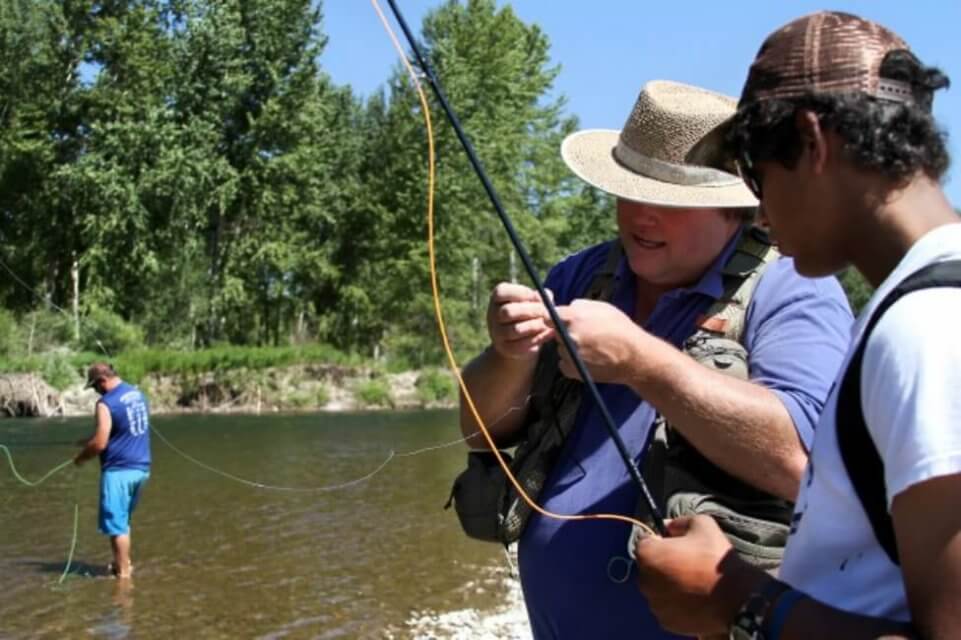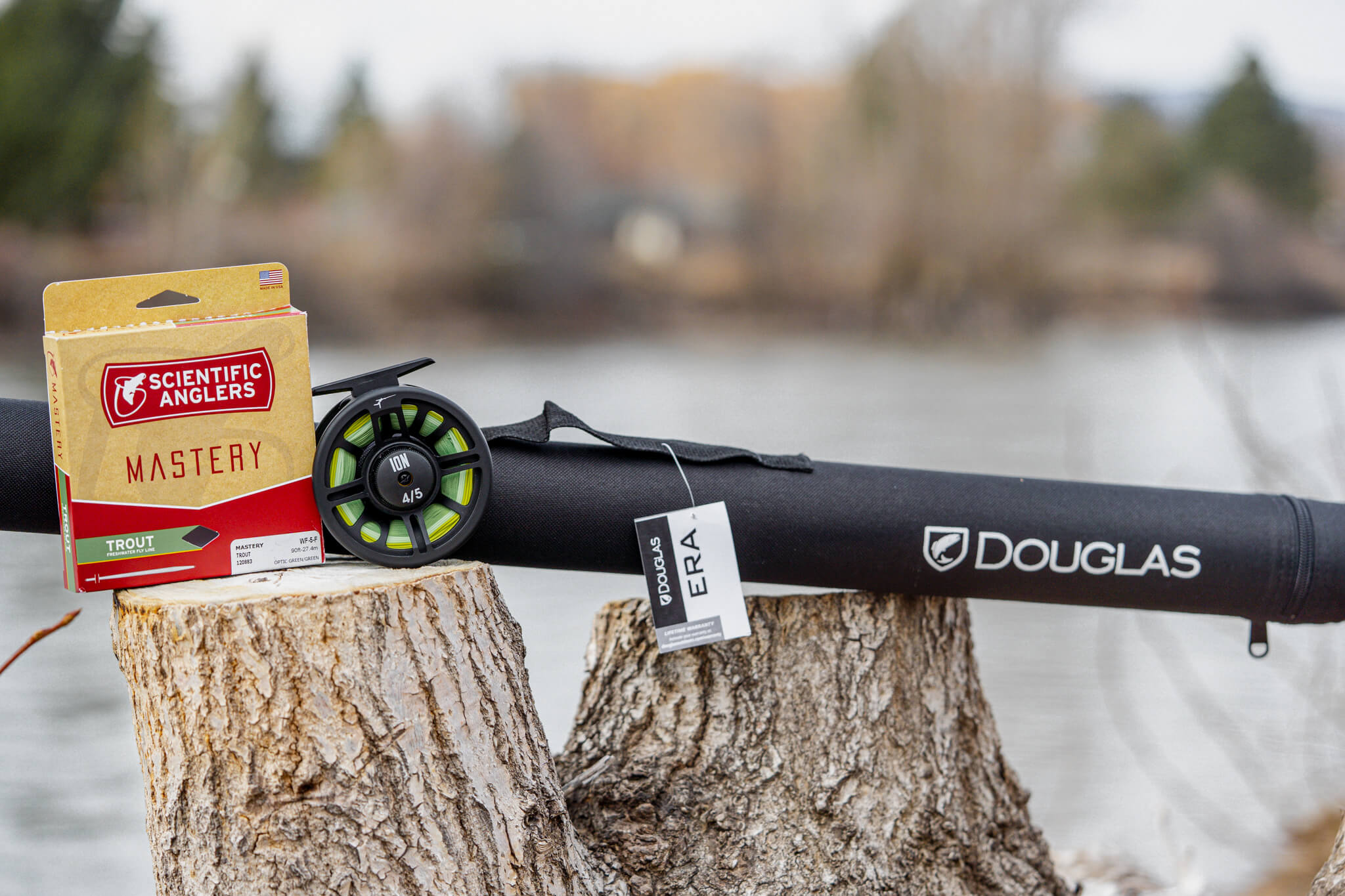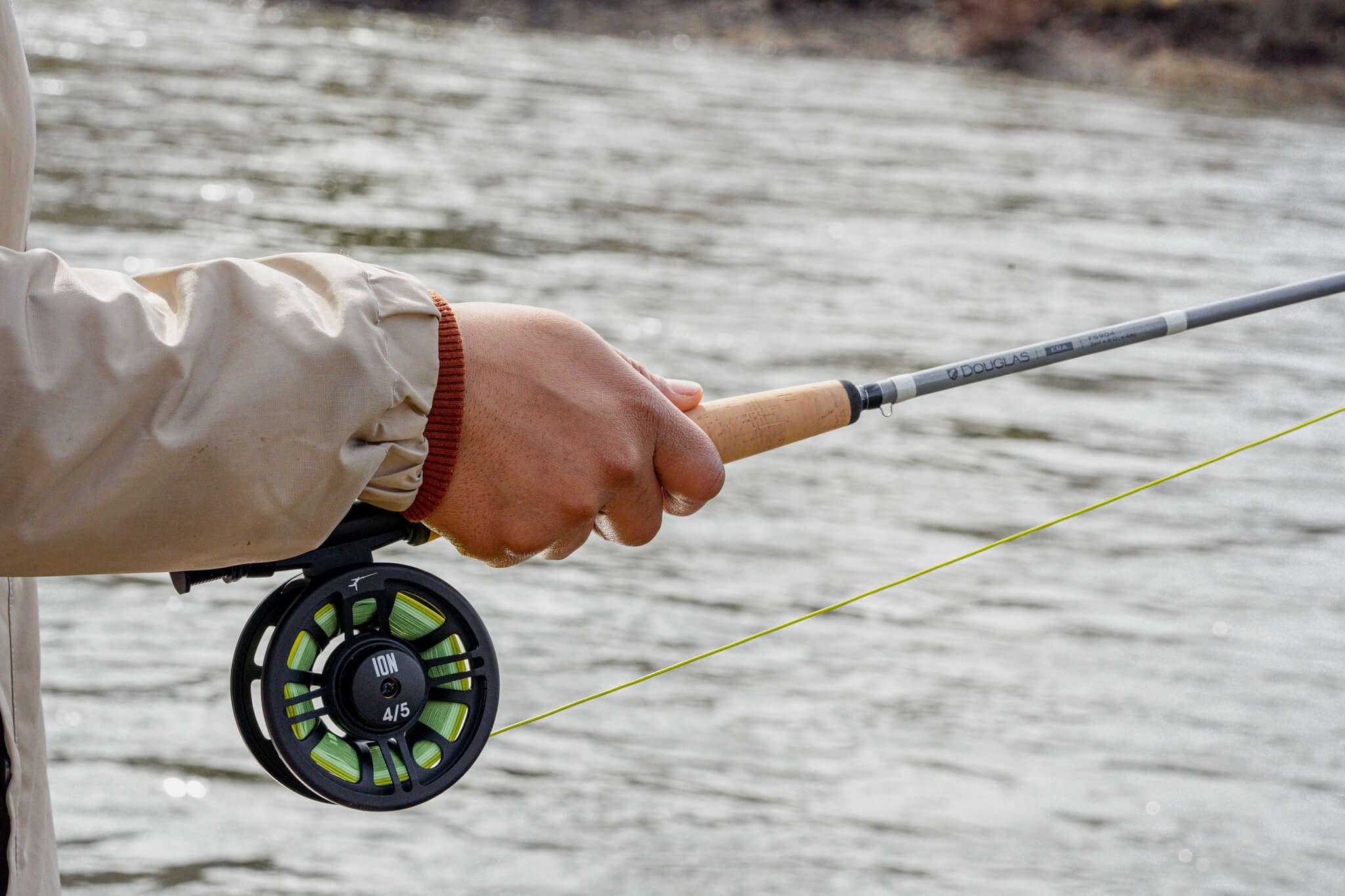Rigging For Fly Fishing
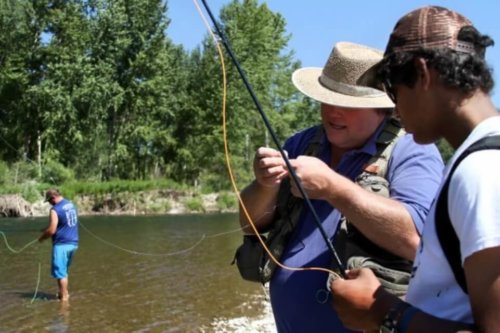
To start off, let’s define rigs and rigging for fly fishing. Your fly fishing rig, for the purposes of trout fishing, is anything beyond the tip of the fly line. Rigging for fly fishing can be defined as using a knot to create an attachment to the fly line tip or leader.
Rigging for can get fairly complicated, say when creating an IGFA leader for setting a world record. You need to follow specific guidelines to make sure the leader is legal. But most rigging for fly fishing we do for trout is much simpler. One of the most basic rigging techniques is rigging for a dry fly. It’s as simple as choosing the correct leader. Loop the leader to the end of the fly line (If your line didn’t have a welded loop when you bought it, have your local shop tie a heavy mono butt section with a loop on the end), and then tie the fly on with a clinch knot. That is basic rigging for a dry fly. When rigging for streamers, most anglers use a version of the basic dry fly rig. A leader and a fly, with the leader adjusted to fly size as well as length to control depth.
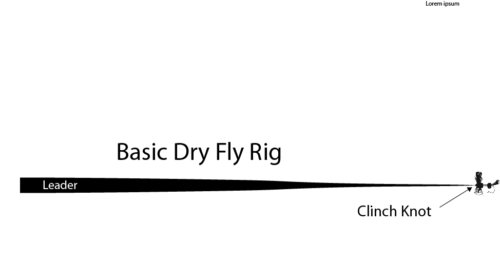
Nymph Rig For Fly Fishing
This old school rig can be used for nymphing, though few do other than Euronymphers and hardcore bottom bouncers. Most anglers use an indicator rig when fly fishing with a nymph. The indicator does two things for the angler. It controls fly depth and also works as a bobber- showing when a fish has eaten your fly. Depth control is critical for nymphing. The fly needs to be close to the bottom, but not so deep as to hang up on the bottom. The rule of thumb is to attach the indicator at 1.5 times the water depth in which you’re fishing. If you’re fishing in two feet of water, attach the indicator three feet from the fly. If nymphing in water three feet deep, place the indicator four and a half feet from the fly.
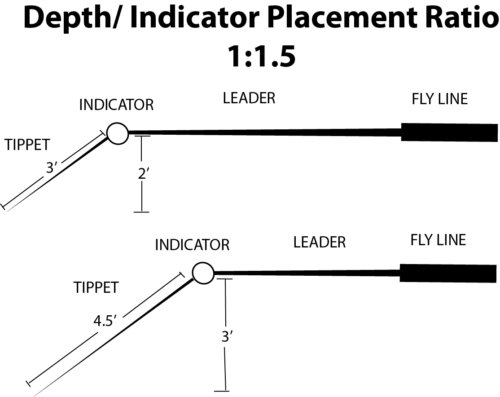
You add extra length between indicator and fly because the fly doesn’t fall from the indicator at a 90 degree angle to the surface, it comes off at more of a 60 degree angle. The additional distance between fly and indicator allows the fly to get to the bottom, where the fish live. When nymphing, you should adjust your rig fairly regularly, until you start connecting with the fish but not the bottom.
When you decide to step your game up a bit, it’s possible to add a second nymph to your rig. When creating a double nymph rig set up, you may need to adjust the original leaders’ length to assist in turnover. The standard length between flies in the two nymph rig is 15 inches. Slightly longer allows for additional fly changes, but affects leader turnover due to additional length and an added hinge point. The first fly tied on is called the point fly. The second fly is called the dropper.
Using two flies allow you to work more of the water column, as well as double your chances of finding what the fish are eating. Some anglers use a large, heavy point fly to help get the dropper down more rapidly. When rigging, it tends to be easier to use the larger fly as point, with the smaller nymph acting as the dropper. This allows for better energy transfer during casting. If the flies are basically the same size, then point and dropper are interchangeable.
Dry Dropper Rig
The video for the Hopper/Dropper will show you how to attach the dropper to the point fly. The clinch knot is a versatile knot, and will rapidly get your second fly attached.
Since you’ve watched the hopper/dropper video, we might as well tell you about that rig. More accurately, the rig should be called a dry/dropper rig, but it started with hoppers and the name stuck. The Hopper/Dropper uses a high floating dry fly to suspend a nymph in the same manner as an indicator. The dry fly is working the surface looking for rising trout, and doing double duty as the indicator.
Getting a good drift from the dry, while maintaining a castable leader length that might include a 4.5 foot dropper takes a bit of practice. It doesn’t work to simply cut the leader 4.5 feet from the tippet and tie your dry fly on. The tippet for the dry fly will be too thick for a decent presentation. To see how a leader works, and what you need to do to build/modify your leader for a proper drift and turnover is explained in our leader blog here. We can’t recommend understanding your leader enough- it’s the source of a lot of frustration on the water. A properly balanced leader, especially with a hopper/dropper, will make your time on the water much more enjoyable.
This simple move helps maintain leader balance when building a dry fly and nymph rig. Before setting out to rig a hopper/dropper, you should know what a comfortable leader length is for your casting. If you’re comfortable casting a 10’ leader, then adding 4 additional feet of tippet to a 9’ leader is going to create problems casting. You may want to taper your leader back to 7’ to the point fly before adding the dropper. The hopper/dropper is favored by anglers looking to ply the surface even when little is happening, while getting down to business sub-surface.
Not only must the leader be balanced for casting, you also must balance the weight of the nymph to the dry fly. You can’t use a size 16 dry fly to float a size 4 nymph- that’s not going to work. The reverse is quite true- a size 4 dry will easily float a size 16 nymph. The trick is finding a dry in a size the fish will eat that also supports a nymph, and it’s not often size 4 dry is the answer. The popularity of foam flies like the Chubby Chernobyl is in direct correlation to their ability to float a nymph. When buying your flies, consider that some may be supporting a dropper, and choose a couple of high floating flies for that purpose. While low floating flies can be utilized on a shorter drift, not surprisingly, they don’t float as well and tend to drown with a longer drift.
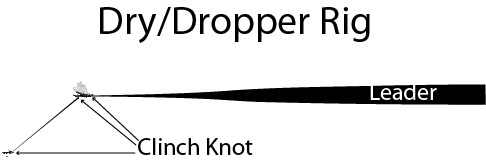
One of the most effective dry/dropper rigs is during a hatch, when the trout are taking emergers. An emerger is an insect that is transitioning from its nymphal phase to an adult, and found just below the surface. This is one of the few times when you don’t use a smaller nymph than a dry. When using a dry to match the hatch, the emerger will be of the same size as the dry. You’re not going to get a very long drift, but since it’s almost impossible to see your emerger fly, the dry works as an indicator. When casting to a specific rising fish, the drift is not designed to be long, just dead drift As an aside, the dry works as an indicator even if it’s sunk- as long as you can see it, it’s an indicator. You adjust the depth of the emerger by the length of tippet extending from the dry. It can sometimes be as short as 4 inches, if the fish are taking emergers directly below the surface film. It is rigged exactly the same way as a hopper dropper, only with a substantially shorter dropper length.
How can you tell when a trout is taking an emerger? You study the rise form. (Technical Dry Fly Fishing) And you might be thinking rise forms, emergers, Hey I’m a beginner, I’m having enough trouble figuring out the surgeons knot. This is why rigging for fly fishing and knots are so important to know about. As you study rigs, you’re getting into the nuances of fly fishing. Working the water column, quickly determining what they’re eating, balancing your leader to maintain drift while still remaining castable- these are all skills that will up your game, leading to more successful fly fishing. Rigging gets you there.

